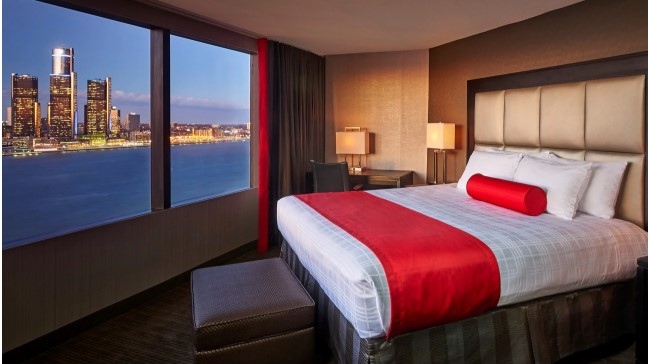@Northern Light
Fair points. I admire your optimism, and you certainly paint a picture of a vibrant place worthy of and in actuality achieving the world's attention.
From your post above it seems we're doing great, millions of visitors, leading cultural events, etc. So, what do you want to improve?
From a tourist perspective ( a list that varies somewhat from what I would like to see done as a local)
1) Public realm improvement. We know we can do and have done some really nice streetscapes, but far too few.
Our main streets, with a few exceptions rate 'fair' at best and often 'poor' in terms of their aesthetic appeal.
From a tourist perspective, most of the improvement should be centred on the core (Don River to Strachan, Davenport to the Lake; with select improvements around key attractions outside the core (Canada's Wonderland, Science Centre etc.
I would focus on delivering:
Queen's Quay East and LRT
Revitalized Yonge
University Avenue as a Great Street
More localized investments for the Entertainment District, Chinatown, St. Lawrence and Yorkville.
- John Street Revitalizatoin, Adelaide and Duncan
- Colborne, Wellington, Scott, Victoria and Church south of Adelaide
- Chinatown Gateway Arch, Beautified and widened sidewalks on Dundas where practical
- Balmuto, Charles, Bay Street and complete Bloor with new streetlights.
Public Realm non-streetscape (Parks, public squares etc.)
- Finish Waterfront Promenade and Boardwalk with all connecting foot bridges
- Facelift Allen Gardens, including restored/expanded Palm House, signature main pathways (stone/interlock, not asphalt), siganture water fountain.
- Major redo of Moss Park
- Finish Nathan Phillips Square (forecourt, planters, tear down bridge over Queen)
- U of T King's College Circle and related re-do
- Upgrade Dundas Square
- Facelift and expand the greenspace at Metropolitan United at Queen/Church
- Finish uplighting of key heritage landmarks
2) Greater nightlife
- As soon as ATC is in place, operate the core of line 1 (if not all of it) 24-hours on weekends.
- Expand overnight TTC routes by at least 5 in the burbs and 2 downtown.
- Improve all overnight transit service to every 20m or better
- Upon completing the above, extend last call to 3am, lower legal drinking age to 18 (matches Quebec)
- Extending regular evening hours of major attractions (ie. AGO/ROM to a baseline of not less than 9pm nightly; and later on weekends wherever demand warrants.
- Extend default patio hours, and make them longer in key areas.
3) Enhance/Celebrate Toronto's cultural distinctions relative to the world; cultural/linguistic diversity, a large francophone community in an 'English' City, First Nations presence.
-Do the above by,:
- Highlighting the french fact where practical (overtime making TTC signage bilingual as its replaced, select bilingual TTC announcements, presence of (some day) a French University.
- Investing in enhancing Toronto's key 'ethnic' retail strips with both public realm but also facade/architecture improvements. One mustn't be too kitsch, but more nods architecturally to the cultures being celebrated would not be a bad thing.
- Encourage more use of indigenous to Canada food ingredients by our restaurants
- Consider a single Indigenous-focused attraction specifically looking at the history and culture of those peoples who were Toronto's first residents.
4) Improve the culinary scene
Its already great, but it can be elevated and better recognized.
- Consider paying for Michelin to do a guide (California did)
- Ask restaurants with ethnic cuisine what ingredients from their ancestral counties they have difficulty sourcing, if any, Facilitate fixing that for enhanced authenticity in cuisine.
5) Address winter better.
- Make bus shelters w/heaters the norm
- Improve plowing to the Montreal standard (remove parking during plowing)
- Install select heated sidewalks
- Find ways to celebrate winter by using ravines/natural corridors to allow for cross-country skiing
- Improve quality/length and amenity of skating trails (heated change rooms, washrooms, concessions)
6) Exploit our status as a Global leader in TV/Film production with the tourist-accessible studio sites
7) Better connections to/from regional attractions, including Niagara Falls and Stratford
8) Better exploit (in a sustainable way), Toronto's natural areas.
-Many people who stand atop or below the Scarborough Bluffs are awed. But the park space in much of the area is also-ran or never-was, and access is poor even by car.
The new Scarborough Waterfront Trail and Bluffer's Park access projects will be very helpful in this regard; but more can/should be done to have a connected trail, and green ribbon along the top of the Bluffs, more signature park spaces, add concessions/washrooms in key locations and make additional connections between the top and bottom where they would create the least harm, environmental or aesthetic.
- Rouge Park needs its Visitors Centre, but also upgraded trails, a trail connection from the southern park to Steeles, canoe/kayak rentals and much better camping facilities.
- Complete other key natural heritage projects, especially those in proximity to the core. (Lower Don, Toronto Botanical Garden etc.










